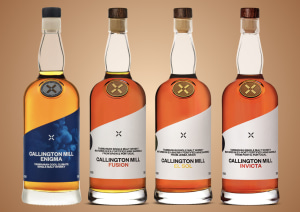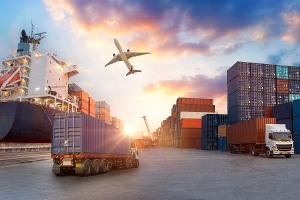At its nutrition factory in Ploiesti, Romania, Unilever has installed a Sidel central palletising system to meet the increasing demands on its production capability. The system has eight robotic cells connected to 28 packing lines.
The plant manufactures products for the Unilever's savoury brands, including Knorr.
The dry nutrition portfolio includes meal makers, dish and sauce bases, and seasonings in various packaging formats. Products come in pouches, bags, cartons, and multipacks, with different product lines also handling secondary packaging options – American boxes, tray and hood, tray and shrinking foil, and shelf-ready packaging.
Since it opened 15 years ago, the factory's production volumes have tripled from 12,000 tons to 35,000 tons per year; SKUs have risen from 200 to 1000; packaging lines increased from 14 to 28; and personnel grown from 200 to 700.
Unilever said it was no longer feasible to utilise the factory’s existing end-of-line system to manage the brands packed on site, necessitating investment in the new central palletising solution.
Automating palletisation
The palletising system comprises eight robotic cells; several hundred metres of case and pallet conveyors; four pallet handling shuttles; and two stretch wrappers, achieving a production rate of up to 98 pallets an hour. This consolidated system is connected to 28 packing lines.
The robotic cells are divided into two separate clusters – one with five robots, and the other with three. Each cluster has one central pallet magazine for all pallet types and sizes, one induction shuttle for full pallet discharge and one compact shuttle for empty pallet delivery integrated underneath the robotic islands.
According to the capacity of each packing line and the palletising pattern requested, the cells have three or four product infeeds, ensuring a robot utilisation rate of 92 per cent.
To keep the palletisation space in a separate area from the packing hall, and accommodate the recurring packing line modifications, Sidel proposed a space saving conveying solution with spiral elevators to increase the flexibility linked to site transformations.
Iuliana Popescu Colt, operations manager at Unilever, said the company was impressed by Sidel’s design capability, to fit the palletising specifications required in a compact area and oversee the complexity and high throughput coming from the packing lines.
Project management
Sidel demonstrated its arrangement using virtual reality glasses to visualise the full installation, check the space constraints and solve potential issues related to platforms, access, and raw material flows. Speed simulations also helped to confirm the speed levels and the robot utilisation rate.
After the design phase, Sidel’s project management spanned from factory acceptance testing to site installation. All eight robot cells were completed in less than eight months. The modular concept accelerated installation as each cell was commissioned individually and at once integrated into the factory’s live packaging operations.
According to Lucian Tarida, process engineer at Unilever, the company has prioritised energy reduction and aims have a zero-carbon footprint by 2030.
“By using an energy saving module for each robotic cell of this palletising installation from Sidel, we’re able to generate energy from the robotic arm deceleration and re-inject it into the network to be used by other robots or equipment within the line," Tarida said.
“Similarly, when a packing line is stopped for cleaning or changeover, conveyors enter standby mode as the photocells detect no products are being transported."
The central palletising system is integrated in the Unilever digital process. As soon as the operator selects the production order from the packaging line, all the information related to the palletisation, including pallet size, type of pattern, number of rows/layers, and the label to apply is automatically set and transmitted to the corresponding palletising cell and the entire end-of-line setup.






